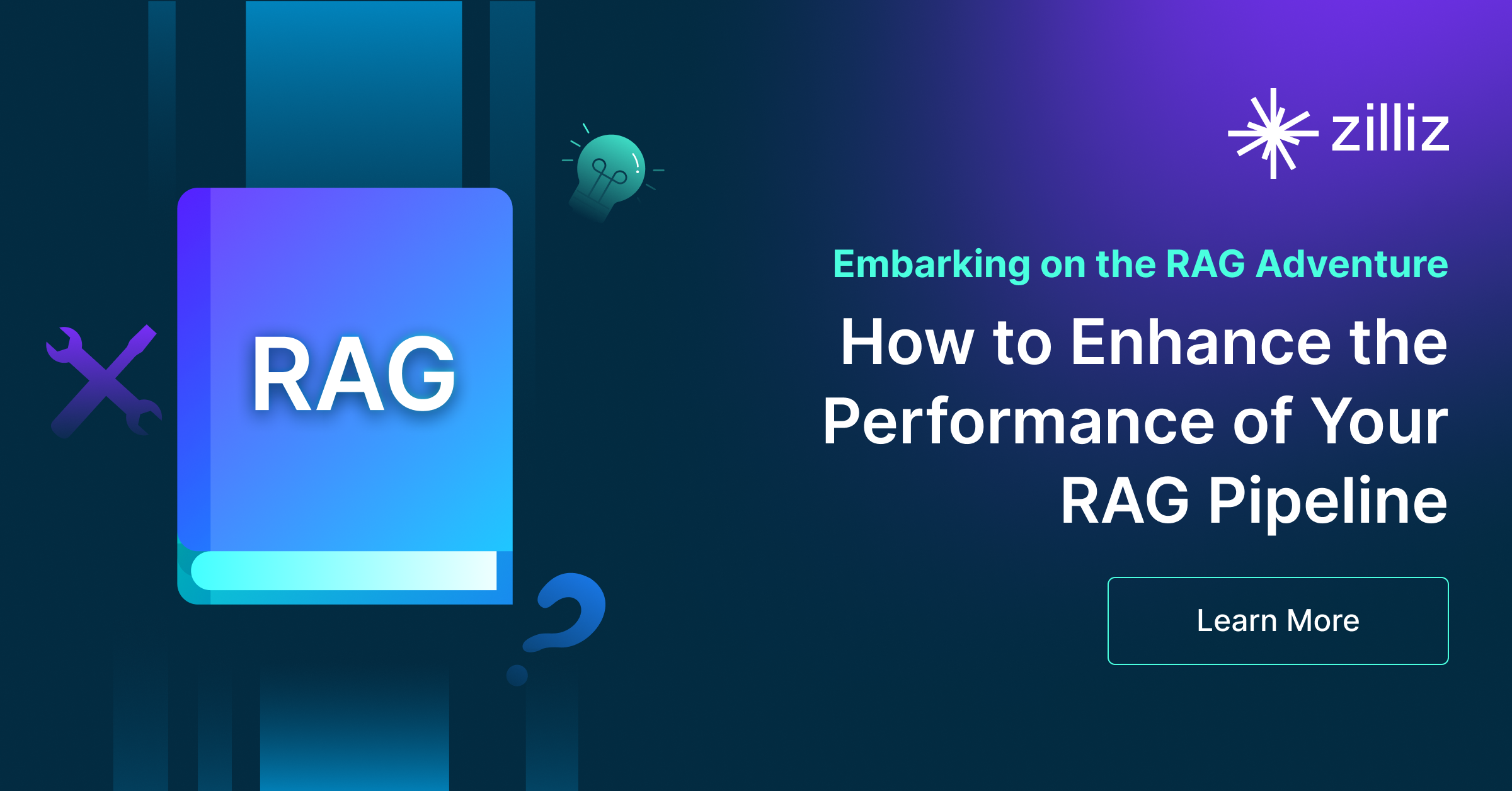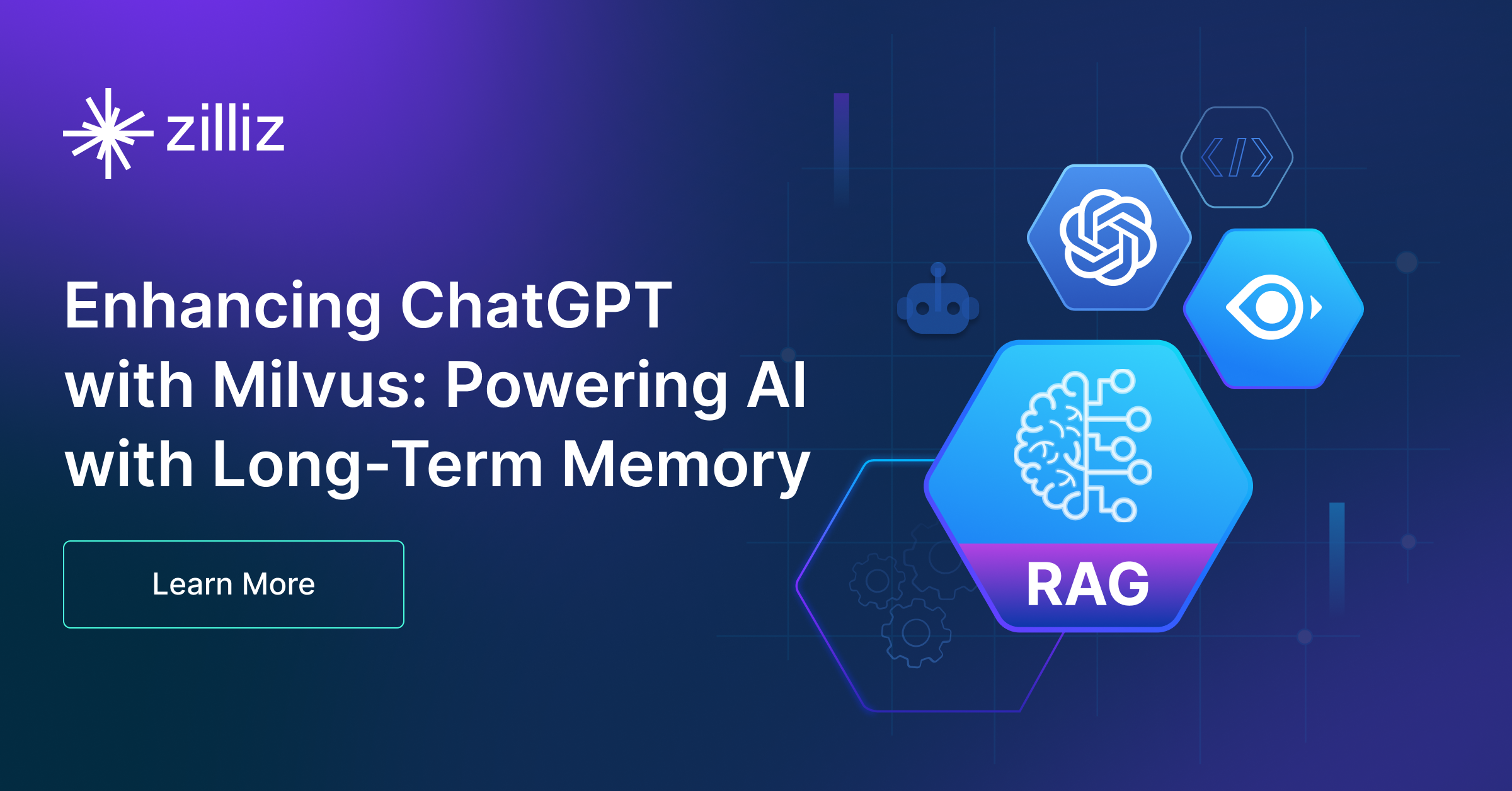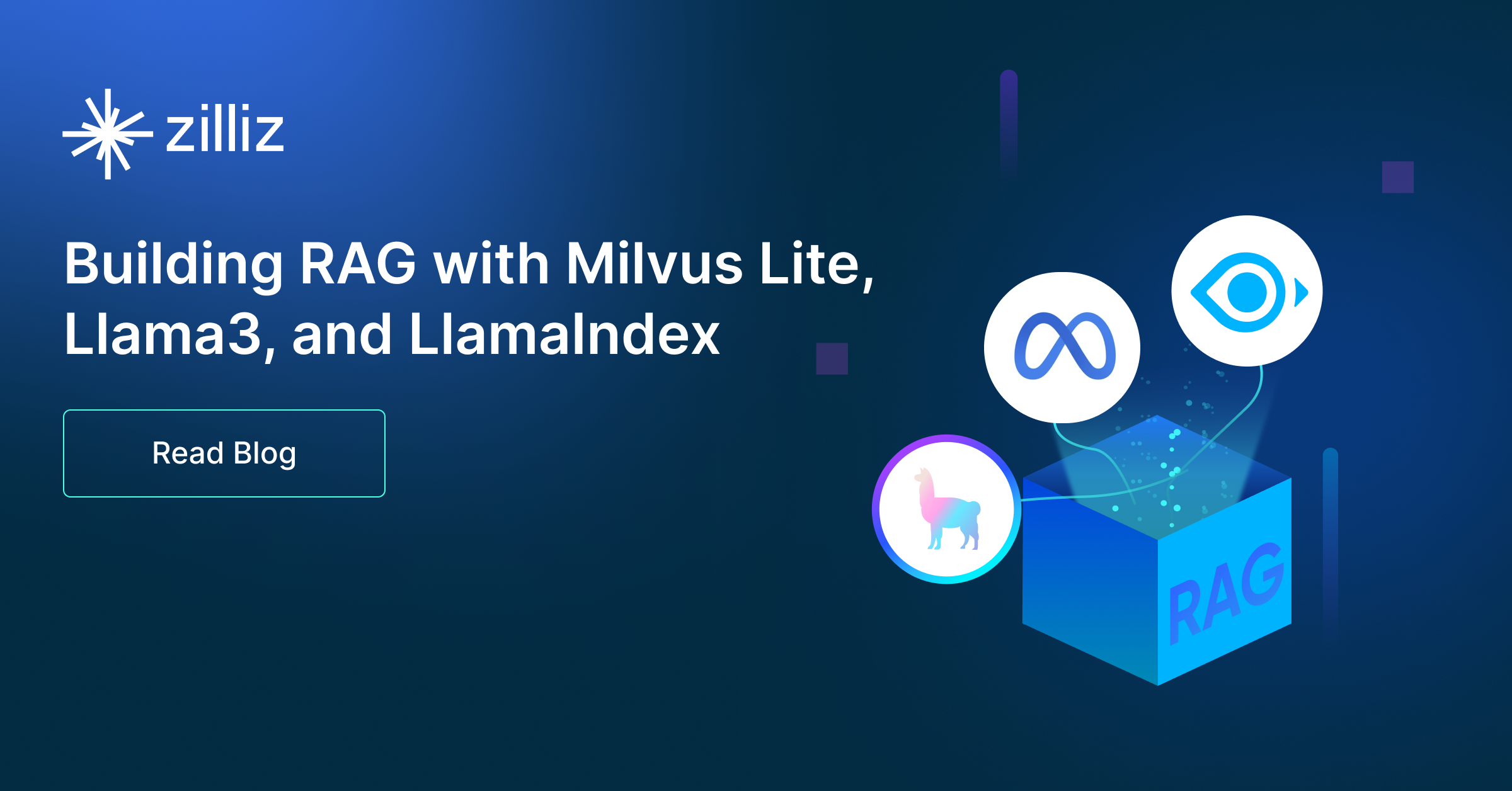Top 10 RAG & LLM Evaluation Tools You Don't Want To Miss
Discover the best RAG evaluation tools to improve AI app reliability, prevent hallucinations, and boost performance across different frameworks.
Read the entire series
- Build AI Apps with Retrieval Augmented Generation (RAG)
- Mastering LLM Challenges: An Exploration of Retrieval Augmented Generation
- Key NLP technologies in Deep Learning
- How to Evaluate RAG Applications
- Optimizing RAG with Rerankers: The Role and Trade-offs
- Exploring the Frontier of Multimodal Retrieval-Augmented Generation (RAG)
- Enhancing ChatGPT with Milvus: Powering AI with Long-Term Memory
- How to Enhance the Performance of Your RAG Pipeline
- Enhancing ChatGPT with Milvus: Powering AI with Long-Term Memory
- Pandas DataFrame: Chunking and Vectorizing with Milvus
- How to build a Retrieval-Augmented Generation (RAG) system using Llama3, Ollama, DSPy, and Milvus
- A Guide to Chunking Strategies for Retrieval Augmented Generation (RAG)
- Improving Information Retrieval and RAG with Hypothetical Document Embeddings (HyDE)
- Building RAG with Milvus Lite, Llama3, and LlamaIndex
- Enhancing RAG with RA-DIT: A Fine-Tuning Approach to Minimize LLM Hallucinations
- Building RAG with Dify and Milvus
- Top 10 RAG & LLM Evaluation Tools You Don't Want To Miss
Retrieval Augmented Generation (RAG) empowers Large Language Models (LLMs) to provide domain-specific and contextually accurate answers by leveraging additional information to generate responses. Due to the benefits offered by RAG, more and more companies are incorporating it to build their AI applications. However, only a few can bring these applications to reality, as the biggest hurdle they face is successfully evaluating them. We’ve all seen it before, such as lawyers submitting false information generated by AI, which highlights the potential dangers of AI and suggests that, in certain situations, its risks may outweigh its benefits.
Performing RAG evaluation is, therefore, crucial to prevent hallucinations, irrelevant and biased responses, and generate trustworthy answers. As a result, to streamline debugging and improve reliability and performance for real-world LLM applications, using RAG evaluation tools is super important. In this blog, we will explore the top 10 RAG evaluation tools that you don’t want to miss looking at to make your next RAG project robust.
Let’s get started.
Popular RAG & LLM Evaluation Tools
RAGAS
RAGAS is an easy-to-use yet comprehensive RAG evaluation tool offering capabilities such as integrations with frameworks like LlamaIndex and Arize Phoenix, synthesizing your custom test datasets for evaluation, and access to several metrics for quality assurance.
Key Capabilities
Offers metrics such as context precision, context recall, faithfulness, response relevancy, and noise sensitivity.
Provides integrations with tracing tools such as LangSmith and Arize Phoenix for observability and debugging.
Access to feedback from production data to discover patterns and assist in continual improvement.
Provides in-house evaluation samples and datasets for your specific use cases.
You can learn more about Raga from this blog on RAG Evaluation Using Ragas.
DeepEval
DeepEval is an open-source LLM evaluation framework offering tests for LLM outputs similar to unit tests for traditional software. Confident AI, the cloud platform of DeepEval, allows teams to perform regression testing, red teaming, and monitoring of LLM applications on the cloud.
Key Capabilities
Offers metrics such as G-Eval, common RAG metrics, and conversational metrics such as knowledge retention, conversation completeness, and role adherence.
Allows easy code integrations for benchmarking on popular LLM benchmarks like MMLU, DROP, and many others.
Provides 40+ vulnerability testing attacks to check the resilience of LLMs against prompt injection attacks.
Supports integrations with LlamaIndex to perform unit testing of RAG applications in CI/CD and HuggingFace to conduct real-time evaluations during finetuning.
TruLens
TruLens is a proprietary tool for enterprises to evaluate RAG. With features such as feedback functions, easy iterations, and the ability to get started simply with a few lines of code, TruLens can work with any LLM-based application.
Key Capabilities
Offers integrations with LangChain, LlamaIndex, and Nvidia NeMo guardrails.
Helps with model versioning to keep track of which LLM apps are performing best based on a variety of evaluation metrics.
It is developer-friendly as the library can be installed from PyPI and it requires only a few lines of code to set up.
Provides feedback functions to programmatically evaluate inputs, outputs, or intermediate results to check for metrics such as groundedness, context, and safety.
Ability to conduct multiple iterations to observe where apps have weaknesses and decide iterations on prompts, hyperparams, etc.
Check out this blog to learn more about TruLens
LangSmith
LangSmith is an all-in-one lifecycle platform for debugging, collaborating on, testing, monitoring, and bringing your LLM application from prototype to production. Its evaluations such as offline evaluation, continuous evaluation, and AI judge evaluation ensure error testing for all stages of the product.
Key Capabilities
Allows easy sharing of observability chain traces with anybody through a link.
LangSmith hub to craft, keep versions and comment on prompts.
Enables custom dataset collection for evaluation using production data or other existing sources.
Ability to integrate human review along with auto evals to test on reference LangSmith datasets during offline evaluation.
Offers continuous evaluation, regression testing, gold standard evaluation, and ability to create custom tests for comprehensive evaluation.
LangFuse
LangFuse is an open-source LLM engineering platform that can be run locally or self-hosted. It provides traces, evals, prompt management, and metrics to debug and improve LLM applications. Its extensive integrations make it easy to work with any LLM app or model.
Key Capabilities
Provides best-in-class Python SDKs and native integrations for popular libraries or frameworks such as OpenAI, LlamaIndex, Amazon Bedrock, and DeepSeek.
Helps compare latency, cost, and evaluation metrics across different versions of prompts.
Streamlines evaluation with an analytics dashboard, user feedback, LLM as a judge, and human annotators in the loop. Also, offers integration with external evaluation pipelines.
It is production-optimized and supports multi-modal data as well.
Offers enterprise security as Langfuse cloud is SOC 2 Type II and GDPR compliant.
LlamaIndex
LlamaIndex is an end-to-end tooling framework for building agentic workflows, developing and deploying full-stack apps, and LLM evaluation. It presents two kinds of evaluation modules - one for retrieval quality and the other for response quality.
Key Capabilities
Offers LLM evaluation modules to check for correctness, semantic similarity, faithfulness, context relevancy, and guideline adherence.
Enables creating custom question-context pairs as a test set to validate the relevancy of responses.
Provides ranking metrics such as MRR, hit rate, and precision to evaluate retrieval quality.
Integrates well with community evaluation tools such as Up Train, DeepEval, RAGAS, and RAGChecker.
Offers batch evaluation to compute multiple evaluations in a batch-wise manner.
Arize Phoenix
Arize Phoenix allows seamless evaluation, experimentation, and optimization of AI applications to work in real-time. It is an open source tool for AI observability and evaluation which supports pre-tested and custom evaluation templates.
Key Capabilities
Works with all LLM tools and apps as it is agnostic of vendor, framework, and language.
Offers interactive prompt playground and streamlined evaluations and annotations.
Provides dataset clustering and visualization features to uncover semantically similar questions, document chunks, and responses helping isolate poor performance.
Phoenix evals run super fast to maximize the throughput of the API key hence it is suitable for real-time evaluations.
Traceloop
Traceloop is an open-source LLM evaluation framework as part of OpenLLMetry focussing on tracing origins and flow of information throughout the retrieval and generation processes.
Key Capabilities
Monitors output quality by backtesting changes and sends real-time alerts about unexpected patterns in the responses.
Assists with debugging prompts and agents by suggesting possible performance improvements.
Automatically roll out changes gradually to help with debugging.
Either you can work with OpenLLMetry SDK or use Traceloop Hub as a smart proxy for your LLM calls.
Galileo
Galileo is a proprietary tool for the evaluation, real-time monitoring, and rapid debugging of AI applications at enterprise scale. It is ideal for businesses seeking scalable AI tools, auto-adaptive metrics, extensive integrations, and deployment flexibility.
Key Capabilities
Provides research-backed metrics that automatically improve based on usage and feedback over time.
Handles production grade throughput which can scale to millions of rows.
Supports offline testing and experimentation with model and prompt playground and A/B testing.
Offers storing, versioning, tracking, and visualization of prompts.
Protects AI applications from unwanted behaviors in real time using techniques such as saved rulesets, prompt injection prevention, and harmful response prevention.
OpenAI Evals
OpenAI Evals is an open-source framework designed to assess and benchmark the performance of LLMs. By using predefined and custom evaluation sets, OpenAI Evals helps teams identify weaknesses and improve them for better performance.
Key Capabilities
Allows generating a test dataset for evaluation either from existing sources, real production usage or by importing stored chat completions.
Provides testing criteria for LLM responses such as factuality, sentiment check, criteria match, text quality, or designing your custom prompt.
Also, supports private evals that can represent common LLM patterns in your workflow without exposing any of that data to the public.
Can use any OpenAI model for building workflows and evaluating them.
Offers finetuning and model distillation capabilities for further improving models.
How to Choose the Right Evaluation Tool for You?
| Use Case | Framework | Key Capabilities | Key Metrics | Open Source / Commercial |
| Easy to use and comprehensive RAG evaluation tool | RAGAS | Integrates with LlamaIndex, Arize Phoenix, and LangSmith for observability and debugging. Provides in-house evaluation datasets. | Context Precision, Context Recall, Faithfulness, Response Relevancy, Noise Sensitivity | Open Source |
| Red teaming and unit tests for LLMs | DeepEval | Provides 40+ vulnerability tests for prompt injection resilience. Enables benchmarking on datasets like MMLU and DROP. | G-Eval, Common RAG Metrics, Knowledge Retention, Conversation Completeness, Role Adherence | Open Source (DeepEval), Commercial (Confident AI) |
| Developer-friendly RAG evaluation with iterative testing | TruLens | Supports model versioning for performance tracking. Provides feedback functions for evaluating groundedness, context, and safety. | Groundedness, Context, Safety | Commercial |
| All-in-one LLM lifecycle platform | LangSmith | Provides observability with easy sharing of chain traces. Supports offline, continuous, and AI judge evaluations. | Regression Testing, Gold Standard Evaluation, Custom Test Metrics | Commercial |
| Self-hosted LLM engineering platform with extensive integrations | LangFuse | Provides Python SDKs and integrations with OpenAI, LlamaIndex, Amazon Bedrock, DeepSeek, and many others. Supports multi-modal data and external evaluation pipelines along with security compliance. | Latency, Cost Analysis, LLM-as-a-Judge, Human Evaluation | Open Source (Self-Hosted), Commercial (LangFuse Cloud) |
| End-to-end framework for LLM evaluation and workflow development | LlamaIndex | Integrates with community tools like UpTrain, DeepEval, RAGAS, and RAGChecker. Supports batch evaluation for multiple evaluations. | Correctness, Semantic Similarity, Faithfulness, Context Relevancy, MRR, Hit Rate, Precision | Open Source |
| Real-time LLM evaluation and observability | Arize Phoenix | Works with all LLM tools and apps, agnostic to vendor, framework, and language. Provides dataset clustering and visualization to identify poor performance. | Relevance, Hallucinations, Question-answering accuracy, Toxicity | Open Source |
| LLM debugging and monitoring with real-time alerts | Traceloop | Monitors output quality by backtesting changes and sending real-time alerts on unexpected patterns. Integrates with OpenLLMetry SDK or uses Traceloop Hub as a smart proxy for LLM calls. | Latency, Throughput, Error rate, Token usage, Hallucination, Regression | Open Source |
| Enterprise-scale AI evaluation real-time monitoring | Galileo | Provides auto-adaptive research-backed metrics that improve with usage and feedback. Scales to handle production-grade throughput with millions of rows. | Toxicity, PII, Context adherence, Correctness, Custom metrics | Commercial |
| LLM performance benchmarking and improvement | OpenAI Evals | Generates test datasets from existing sources, real production usage, or stored chat completions. Includes finetuning and model distillation for model improvements. | Factuality, Sentiment, Text quality, Custom tests | Open Source |
Real-World Tips for Choosing the Right Evaluation Tool
Understand Business Needs - Define the primary goals - whether it's improving model accuracy, reducing costs, enhancing user experience, or scaling operations. Choose a tool that directly supports these objectives.
Customization for Specific Use Cases - Look for tools that allow customization to your domain or product requirements (e.g., integrating domain-specific metrics, using proprietary data, or working with your current LLM frameworks).
Scalability - If your business aims to scale, choose a tool that handles large data volumes, provides fast evaluations, and integrates with cloud infrastructure for efficient scaling.
Cost-Effectiveness - Ensure the tool aligns with your budget. Some tools may have a high upfront cost but can save long-term operational costs by optimizing the evaluation process.
Ease of Integration - Pick tools that integrate seamlessly with your existing workflows, whether in CI/CD pipelines or production environments, without requiring a major overhaul.
Real-Time Insights - If real-time monitoring and quick feedback are crucial to your business, choose tools that support fast, on-the-fly evaluations to enable rapid iteration.
- Popular RAG & LLM Evaluation Tools
- How to Choose the Right Evaluation Tool for You?
- Real-World Tips for Choosing the Right Evaluation Tool
Content
Start Free, Scale Easily
Try the fully-managed vector database built for your GenAI applications.
Try Zilliz Cloud for FreeKeep Reading

How to Enhance the Performance of Your RAG Pipeline
This article summarizes various popular approaches to enhancing the performance of your RAG applications. We also provided clear illustrations to help you quickly understand these concepts and techniques and expedite their implementation and optimization.

Enhancing ChatGPT with Milvus: Powering AI with Long-Term Memory
By integrating GPTCache and Milvus with ChatGPT, businesses can create a more robust and efficient AI-powered support system. This approach leverages the advanced capabilities of generative AI and introduces a form of long-term memory, allowing the AI to recall and reuse information effectively.

Building RAG with Milvus Lite, Llama3, and LlamaIndex
Retrieval Augmented Generation (RAG) is a method for mitigating LLM hallucinations. Learn how to build a chatbot RAG with Milvus, Llama3, and LlamaIndex.